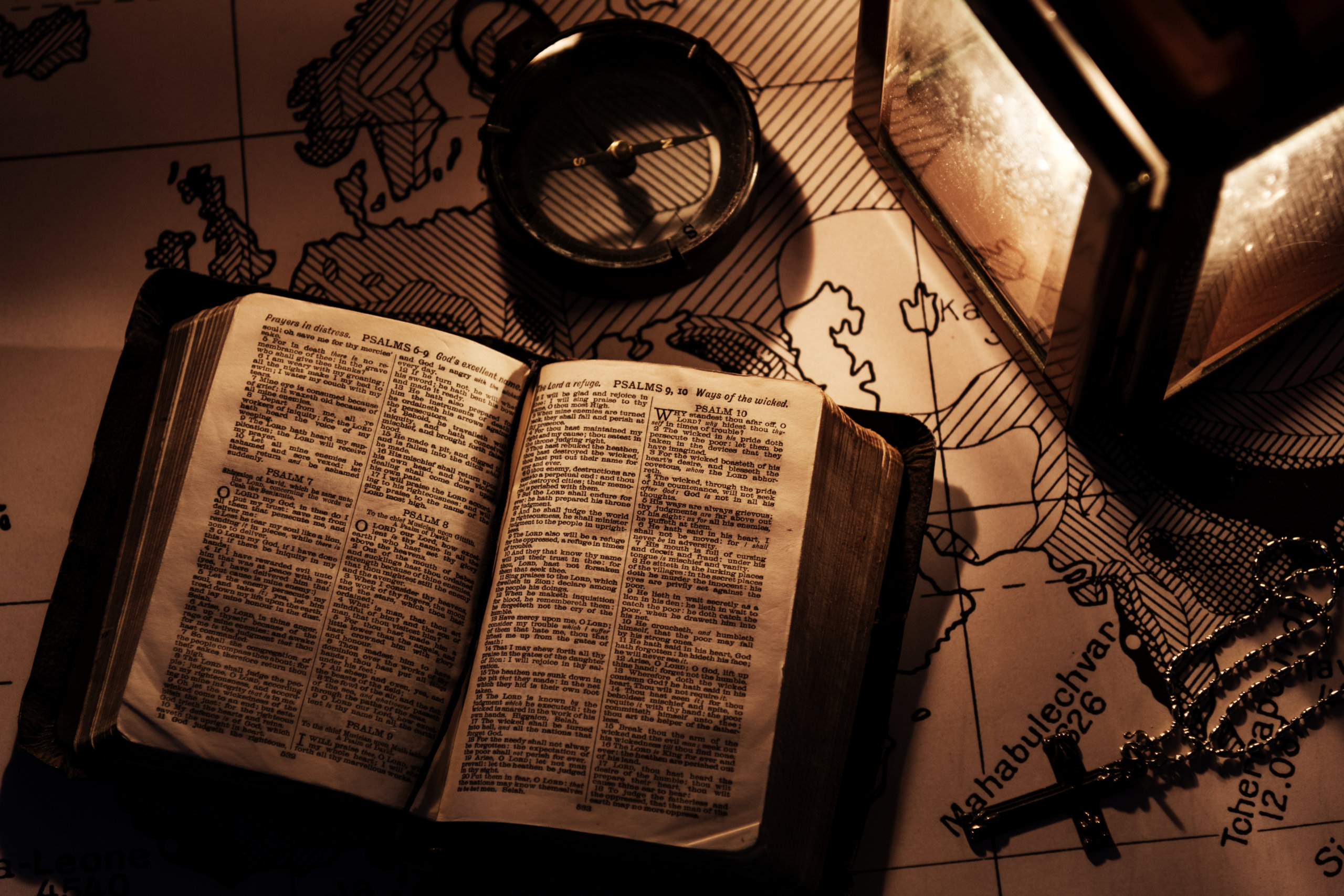The Bond of Keltney Burn, 1654
The Bond of Keltney Burn was a pact of mutual protection signed in 1654 by the heads of all three Highland Stewart clans (Balquhidder, Appin and Atholl) in opposition to the encroachments of Clan Campbell…. Or was it?

Background to the Signing of the Bond of Keltney Burn
The Execution of King Charles I, 1649
King Charles I was not a beloved king. Well, actually, he was so hated that he provoked a civil war in both Scotland and England. In Scotland, he was opposed by the Covenanters led by Archibald Campbell, Marquis of Argyll. In England, he was opposed by the Parliamentarians under Oliver Cromwell. He was supported by the Royalists under James Graham, Marquis of Montrose.
At the outbreak of the Scottish Civil War, we know that the Stewarts of Balquhidder, under their chief, James Beag Stewart, 2nd of Ardvorlich, supported the Royalists under Montrose, but were forced to change sides after Ardvorlich murdered Montrose’s cousin and factor, John Graham, Lord Kilpont, in 1644. The Stewarts of Atholl and Appin also supported the Royalist cause.
Charles I lost both civil wars, culminating in his execution on 30 January 1649 for his tyrannical arrogance.
Long Live King Charles II of Scots
Almost immediately, just a week later, on 5 February 1649, the Parliament of Scotland proclaimed Charles’ son, Charles II, King of Scotland. The Stewarts had ruled in Scotland since 1371 beginning with King Robert II (ancestor both the Stewarts of Balquhidder and the Stewarts of Atholl.) Scotland remained loyal to the Stewarts.
The Defeat of King Charles II by the English Parliamentarians

However, England was done with kings. They had no interest in seeing Charles II or any king sit on their throne. England wanted a republic and began a period known as the Commonwealth under the rule of Oliver Cromwell, as Lord Protector. Cromwell saw Charles II’s presence on the Scottish throne as a threat to his burgeoning republic. Cromwell’s Parliamentary army defeated Charles II’s Royalist army at the Battle of Worcester on 3 September 1651, and Charles fled to Europe. Among the 16,000 Royalist soldiers fighting for Charles II on that day were likely many Highland Stewarts from the Stewarts of Balquhidder, Atholl and Appin.
Scotland was without a king. Well, they had a king, but he was in exile in Europe and unable to rule. But he kept the flame of hope alive from across the narrow sea. It wouldn’t be the last time that Scotland was toasting “the King over the water.”
Cromwell ruled Scotland like a dictator. England would eventually realize that it had merely swapped a tyrant for a dictator.
English Commonwealth Imposed on Scotland – 12 April 1654
Two and a half years later, Cromwell put an end to Scottish hopes and imposed England’s Commonwealth government on Scotland.
“On 12 April 1654, the Council of State issued and Ordinance for uniting Scotland into one Commonwealth with England, which would be the “Commonwealth of England, Scotland and Ireland”, under the authority of the Instrument of Government that made Cromwell Lord Protector.”
(Wikipedia)
This act was a direct threat to Scottish sovereignty and autonomy. Although Scotland and England had shared a common king after the Union of the Crowns in 1603 (when King James VI of Scotland became King James I of England), they did not share a common parliament or government and remained separate, independent countries. Now England was imposing its Commonwealth government on Scotland.
Ten weeks after the Council of State Ordinance was issued, a group of Highland gentlemen (not coincidentally all surnamed Stewart) gathered in a remote glen, deep in the Highlands of Scotland to sign a potentially treasonous document.
The Signing of the Bond of Keltney Burn – 24 June 1654

Unfortunately, we do not possess the full text of the Bond of Keltney Burn. We have only secondary and tertiary references to its content.
A bond was simply a pact of mutual defence against a common enemy. In this case, the enemy was Clan Campbell. In the power vacuum left behind in Scotland by an absentee king who spent all his time in England, the Campbells, under their chief, Archibald Campbell, Marquis of Argyll, began aggressively consolidating power and acquiring land. They became the most hated clan in Scotland. Every Highland clan had a reason to unite in opposition to them. The Campbells were particularly aggressive against the Stewarts of Atholl. But the Stewarts of Atholl had friends.
“I may mention a bond of amity and mutual defence entered into by a number of gentlemen of the name of Stewart in Athole, Menteith [Balquhidder], and Appin, to which each affixed his seal and signature, binding himself to support the others against all attacks and encroachments especially from the marquis of Argyle, who had sided with the Covenanters. This bond is dated at Burn of Keltney, 24th June 1654.”
Major General David Stewart of Garth, Sketches of the Character, Manners and Present State of the Highlanders of Scotland (1822)
David Stewart of Garth’s description of the Bond of Keltney Burn gives us a helpful look at the form of the bond and its veiled political implications. Garth (who, coincidentally, was born on the bank of the Keltney Burn) says that, on its surface, the bond was signed by the chiefs and chieftains of the three major Highland Stewart clans (Balquhidder, Atholl and Appin) in protection of Atholl lands against encroachment by Clan Campbell. However, it’s not that simple. Clan Campbell’s chief was Archibald Campbell, Marquis of Argyll, who was Oliver Cromwell’s ally and right hand man in Scotland. He was also a co-conspirator of Cromwell’s in the murder of King Charles I.
The choice of Keltney Burn as the signing location was likely because it was in the heart of Atholl country, thus reinforcing the “cover story” that this bond was about protecting Atholl lands.
The Veiled Threat in the Bond of Keltney Burn
The timing of the signing of the Bond of Keltney Burn, coming just ten weeks after the imposition of an English government on Scotland, cannot be ignored. Neither can the names of the clans be ignored. A bond against Clan Campbell was really a bond against Archibald Campbell, Marquis of Argyll. And a bond against Archibald Campbell was really a bond against Oliver Cromwell’s English Commonwealth Parliament, which made it a bond in veiled support of Charles II. The fact that the bond was signed by three families who all shared blood and a surname with the exiled king, makes its veiled threat clear. As Cromwell ruled both Scotland and England, this made the Bond of Keltney Burn a direct threat to the English Commonwealth government and a treasonous document.
It may have been written in the language of three Highland clans uniting in opposition to another Highland clan, but it was really three Highland Stewart clans declaring their loyalty to their exiled Stewart king in opposition to the English government’s Campbell puppet in Scotland.
Stewart Clan Magazine
The late George Thomas Edson, founding editor of Stewart Clan Magazine, and a descendant of the Stewarts of Gartnafuaran, wrote in the January 1940 issue of SCM (vol. XVII, no. 7, pp. 126-127), that the Bond of Keltney Burn was “in tacit support of Charles II.” (Jared Olar) Edson was using Duncan Stewart (1739) as his source.
Duncan Stewart (1739)
Duncan Stewart, in his Short Historical and Genealogical Account of the Surname Stewart, published in 1739, (p. 143) in the footnote to the article on the Stewarts of Kinnachin, writes:
“John Stewart of Kinnachin did, with several Gentlemen of the Name of Stewart in Athole (such as the Predecessors of Bonskeid, Clune, Duntaulich, Fincastle, Sir Gilbert Stewart of Polack, Foss, Balnakillie, &c) sign a Bond of Association with the Stewarts of Apine and those of Balquhidder, or the South west District of Perthshire. This Bond is dated at the Burn of Kelney, anno 1654. Duncan Stewart, Fiar of Apine, and James Stewart there, sign this Bond, as do James Stewart of Ardvorlich, John Stewart of Annat, and Duncan Stewart his Son, Predecessor to Ballachalan, John Stewart Predecessor to Glenbucky, Walter, Predecessor to Gartnafuaraoe, Robert, Predecessor to Hyndfield, &c.”
Duncan Stewart, A Short Historical and Genealogical Account of the Surname Stewart, 1739
The Balquhidder Signatories
Duncan Stewart (1739) lists nine signatories from Clan Stewart of Atholl, two from Clan Stewart of Appin, and six from Clan Stewart of Balquhidder. He identifies the signatories from Clan Stewart of Balquhidder as “James Stewart of Ardvorlich, John Stewart of Annat, and Duncan Stewart his Son, Predecessor to Ballachalan, John Stewart Predecessor to Glenbucky, Walter, Predecessor to Gartnafuaraoe, Robert, Predecessor to Hyndfield, &c.” The “etcetera” at the end of the list is tantalizing as it would seem to imply that there were more Stewarts of Balquhidder who signed the Bond of Keltney Burn than just the ones who are named here. If only we had access to the original bond itself.
We can identify the Balquhidder signatories as follows:
- James Stewart of Ardvorlich. He is Major James Beag Stewart, 2nd of Ardvorlich, Chief of Clan Stewart of Balquhidder.
- John Stewart of Annat. He is John Stewart, 2nd of Annat.
- Duncan Stewart his Son, Predecessor to Ballachalan. He is Duncan Stewart, 1st of Ballachallan, younger son of John Stewart, 2nd of Annat.
- John Stewart Predecessor to Glenbucky. He is John Dubh Mor Stewart, 6th of Glenbuckie.
- Walter, Predecessor to Gartnafuaraoe. He is Walter Stewart, 7th of Gartnafuaran.
- Robert, Predecessor to Hyndfield. He is Robert Stewart, 4th of Glenogle and in Auchanlachoylithie and Balanluig, ancestor of Hyndfield (Stronvar).
Highland loyalties run deep. In a politically hostile climate, truth can be dangerous, and all may not be as it appears on the surface.












0 Comments